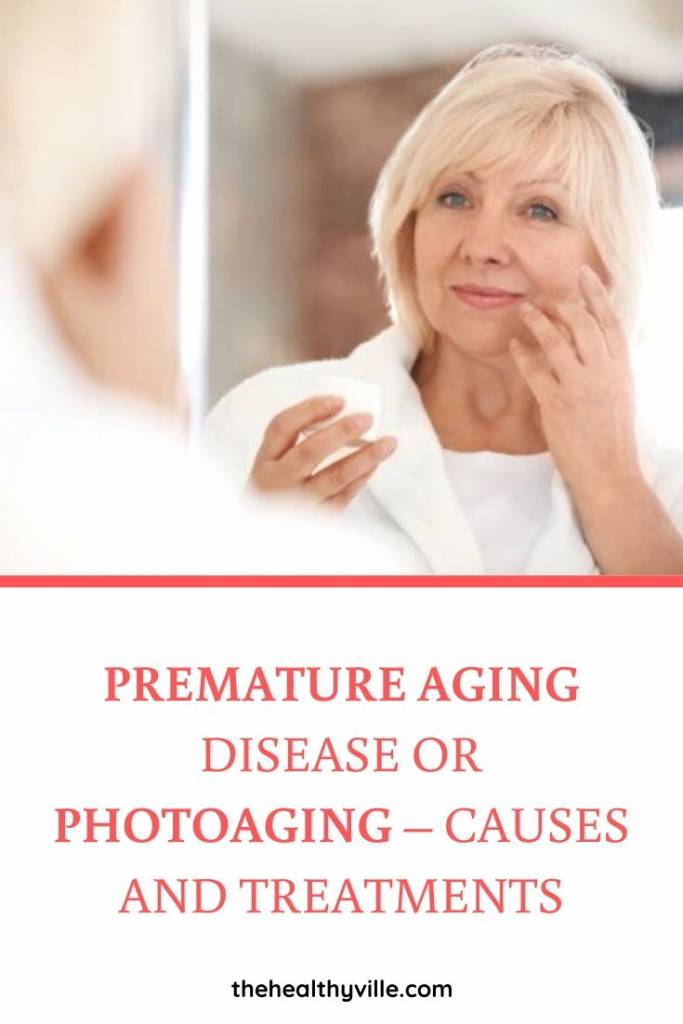The premature aging disease called photoaging can appear to people that live on a continuous exposure to UVA and UVB ultraviolet rays. See how to treat it.
Photoaging is a premature aging disease that refers to the deterioration that the skin suffers from the sun and that leads to signs of skin aging. The estimations are that between 75 and 90% of wrinkles and lack of elasticity in the skin are the effect of the sun and not chronological aging.
Exposure to UVA and UVB ultraviolet rays is the determining factor for the appearance of premature signs of old age. It is believed that photoaging begins to manifest around the age of 20 and that the damage is directly proportional to the time of exposure to the sun without protection.
Today it is known that photoaging is a long-term process. According to experts, the excesses committed, for example, at 15 years, only reveal their effects when the person reaches 40 years. It is several years of solar exposures that lead to this form of deterioration.
Natural aging and photoaging (a premature aging disease)
Aging is influenced by internal and external factors:
Within the internal factors, genetics plays a fundamental role. This determines the thickness and quality of the skin, as well as its level of repair, the quality of elastin and collagen fibers, among others.
On the other hand, external factors include several elements that accelerate the aging process due to its impact on the skin. Within these elements the most decisive is the sun, although they also influence food, environmental pollution and lifestyle.
After 25 years, the regeneration capacity of skin cells decreases. This leads to, gradually, the skin loses elasticity and wrinkles appear, mainly on the face. If there is inadequate exposure to the sun and sunlight, these symptoms increase. That is called photo aging.
Causes of photoaging
Photoaging is a premature aging disease due to the action of UV radiation on the skin. Basically, there are two types of UV rays:
The first are UVA rays, which affect the superficial layers of the skin. They give rise to tanning, but also to the signs of premature aging, such as wrinkles.
On the other side are UVB rays, which penetrate deep areas of the skin. They are able to pass through the crystals and are present throughout the year, whether there is sun or not. They can cause burns and skin cancer.
UV exposure causes the collagen to degrade. Collagen molecules break down and cause an abnormal accumulation of elastin. Faced with this accumulation, the dermis responds by producing a large number of enzymes called matrix metalloproteinase (MMP), which in Spanish are translated as matrix metallopeptidases.
The result is a deformation in the collagen fibers. These begin to take on a disorganized appearance and, over time, form furrows or wrinkles. After a while, the skin acquires a parchment-like texture. There is roughness, dryness and, many times, changes in the skin pigment.
Photoaging control
The best measure to prevent photo aging is to prevent it. And the most appropriate way to do this is to use a broad spectrum sunscreen daily. Being broad spectrum means that it protects both UVB and UVA rays. Ideally, they have a sun protection factor (SPF) of 30 or greater.
It is important to emphasize the fact that the protector should be used daily, regardless of the season of the year we are in. Although the day is cloudy, ultraviolet rays are present. So it is not enough to protect the skin only in summer, or in sunny times.
The best sunscreens are those that contain Helioplex and Mexoryl. These substances make the effect longer and that frequent reapplication is not necessary. If the signs of photoaging have already appeared, it is best to use creams or serums that contain retinoids.
Other aspects to consider
Another way to prevent photoaging is to include antioxidant foods in the diet. Some of them are citrus fruits, fresh vegetables, peppers, carrots, celery and lettuce, among others. These help to combat the effect of ultraviolet rays.
The World Health Organization has pointed out that the best protection against the sun is not to expose it directly to it, especially during the most intense hours. Even notes that more than sunscreen, it is appropriate to wear protective clothing such as wide-brimmed hats, closed glasses, etc.
Don’t forget to SHARE all the info on the premature aging disease photoaging with your friends and family on your social networks!

